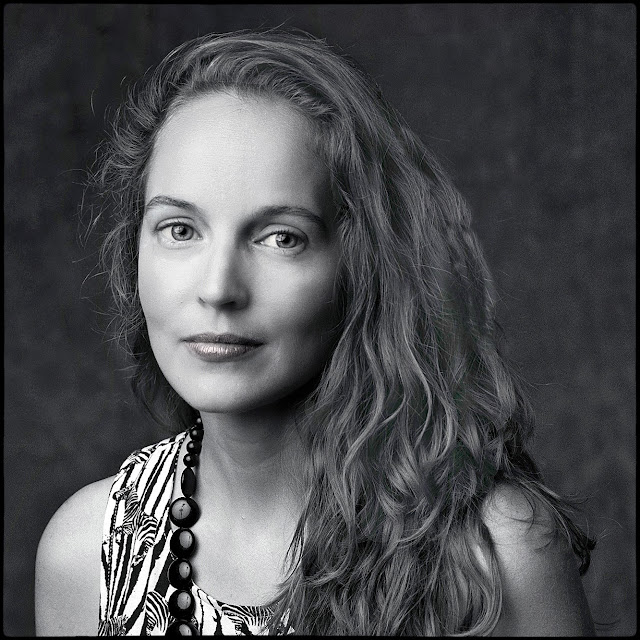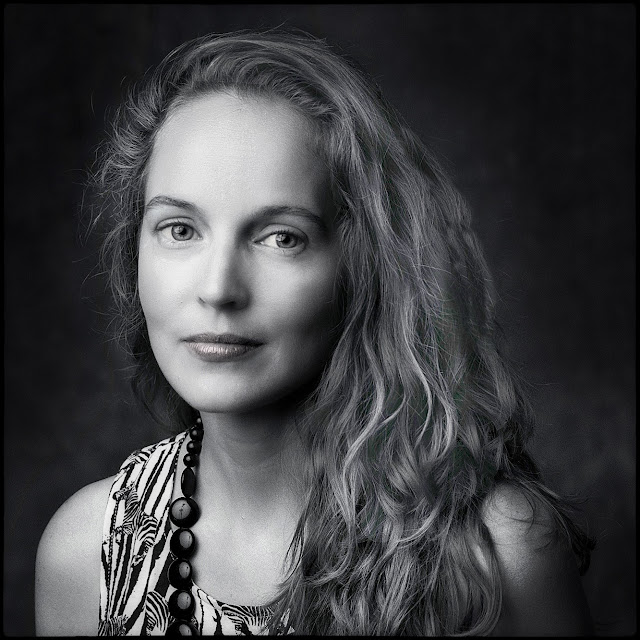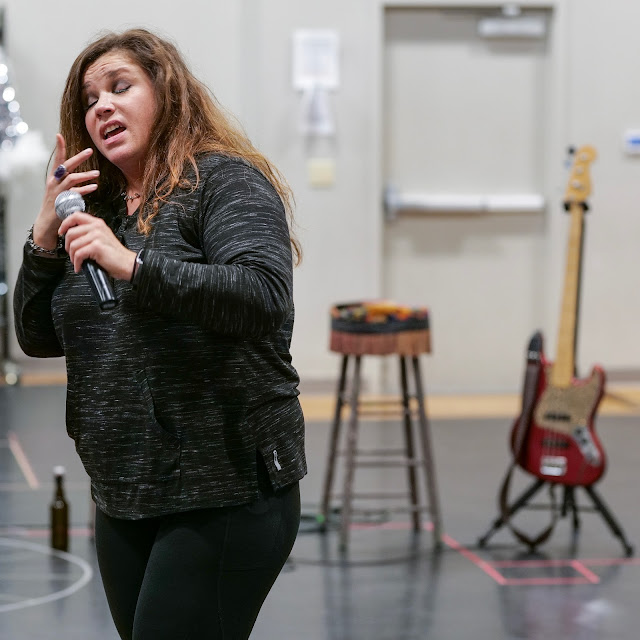Mary Bridget Davies as "Janis Joplin" in Zach Theatre's, "A Night with Janis Joplin.
Right up front we should consider that there are two decision making branches we take when we choose what focal length and which aperture we end up using for a particular shot, or series of shots. The first branch might be the one in which the photographer has complete and absolute technical control over all aspects of making a photograph and can choose exactly which focal length lens and what aperture to use in order to get exactly what they want to get in sharp focus, and what they don't need to have in that zone of sharp focus. This might entail being able to shoot with as much light as you could possibly want. It might also pertain to a situation in which you are shooting an exterior location, have great sun light and a crew of many who can put up giant silks to diffuse the sun in order to get the quality of the light just perfect.
If you have total control over the camera, the lens settings, and the light you get to choose the f-stop that will give you exactly what you want/need for your project.
In many cases this way of working is the basis of advertising work. You get to cast the perfect model. Your stylist dresses them in the perfect selection of clothes. Your make up and hair people pull off the look you had banging around in your head as you planned the project. The lighting is flawless and nearly infinitely controllable. Ah, it's good to work with god-like control!
But there is a second branch of decision making which is based on pure need. The need to get a usable image into your camera in situations where the only control you have is how to handle the settings on your camera and lens, and also where you point the lens. Oh, and exactly where you are going to place the point of focus to make it all work for you.
In these situations you will, in my experience, not be able to control the lighting, the movement of the subjects, the speed of the action, the costumes or the pace of the shoot. If you usually like to have full control over what happens on a shoot then situations in which you have little to no control are a hard learning process where your overriding goal is to get the best stuff you can while realizing that your photography is a lower priority to the process you happen to be photographing than just about anything else on the set.
In these situations you are likely trying to find a fast enough shutter speed to actually freeze most action and, if you shoot like me, you'll probably be looking for 1/250th of second or a little faster (shorter). You might not always be able to freeze hand motion, because hands move faster than bodies, but you'll have a good chance of getting your subject still enough. Once you've got a shutter speed that both "freezes" action and allows you to handhold well enough you'll probably want to select the highest ISO you can reasonably live with. If you are in a "high" illumination setting then --- congratulations! You'll have a wider range of ISOs to choose from and more leeway in selecting a corresponding aperture. But if you live in most of the real world (or in the U.K. where readers constantly write to tell me that even at high noon in the dead of Summer the light is so dim that it's hard to even read a book outdoors...) you might find yourself selecting ISO 3200 or 6400 as your best choice, image-wise, in a particular environment. Especially when working indoors. Then, looking at your choices you find yourself locked into something like f1.4, f2.0 or f2.8 as being your best choices to balance out the exposure/motion-stopping/low-enough-noise equation.
In these cases the choice of whether or not to blur the background, to a certain extent, is largely made for you. Sure, you can try using wider lenses but you risk changing the perspective and/or the shooting distances that make for a comfortable photo. In the photo at the top of the page I needed the right shutter speed to stop hair movement, and subject body and expression movement. It had to be 1/250th or faster. The low light had me cranking up the ISO to 4000 and that left me with an acceptable aperture of f2.5. With an 85mm lens, and the way the subject-to-background subject fell out, the person in the back, right side of the frame, is more suggestion than substance.
In the photo just above the person in the foreground was further from the camera (I cropped in to the square) and closer to the person in the background. I think it's less trendy, at least in terms of how humans really process scenes with their eyes and brains.
The bottom frame, just below, is the sweet spot for me. It was also shot from a further camera to subject distance than the top image and also cropped. The actor was moving slower so I hazarded a shutter speed of 1/125th which allowed for a aperture of f2.8 which, in turn, gave me a bit more focus on the stool and guitar in the background. I like it because the guitar is an important symbol for the production.
While I was making these images I was daydreaming about putting 12 large (4x6 foot) softboxes up in the rafters and powering each one with a 1200 watt second flash generator. I would then be able to shoot as lower ISOs and smaller apertures---and with electronic flash I wouldn't have to worry much about using shutter speed to freezing motion.
But I actually remembered doing shoots like that when we were using medium format film cameras to do the same kind of work (but with fewer soft boxes and heads). It was incredibly time consuming to rig something like that (plan on at least a day of pre-production) and to trigger all the lights. With medium format cameras and ISO 100 film though it made for really high quality images, reliably. But not much better in overall image quality than what we can get out of today's miracle cameras and lenses.
Today's work looks different because we're playing right at the edges of acceptable camera/aperture settings. The older work had more front-to-back focus but was so much less spontaneous. And then there was the cost!!! I calculated the cost of banging off 2,800 medium format film shots with 12 shots on a roll. It's approximately 233 rolls of film (X 12 frames per roll) which, with processing included cost about @$15 per roll, and would have set the client back somewhere around $3,495. Just in film and processing; not counting Polaroid tests and the manpower to keep a bunch of film backs loaded and humming. Not to mention the rental fees on a truck load of lighting...
Choice is more expensive than working with what you have. But sometimes the unknown and the surprises make winging it a lot more fun. I've enjoyed working at the edge of wide open for the last week or so. It's an acquired taste and, like haggis, not something I want at every meal. But it works when you have to get the shot and circumstances limit your options.
Then it's: Go wide open or go home.












